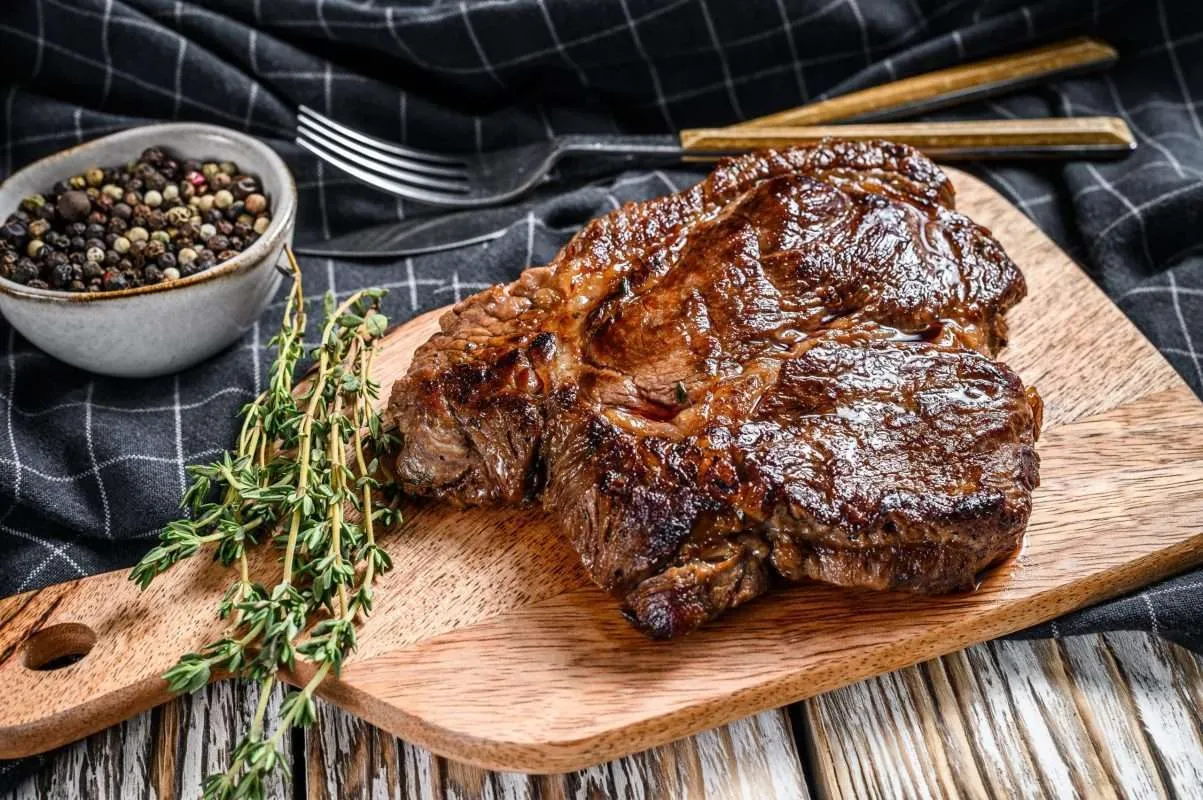
Chuck Eye Steak: The Affordable Beef Gem with Premium Flavor
In the world of beef cuts, where each slice tells a unique tale of flavor and texture, the Chuck Eye Steak emerges as a hidden gem waiting to be discovered. Often overshadowed by its more famous counterparts, this cut holds a special place among meat enthusiasts for its affordability and delectable qualities. In this exploration, we’ll unravel the origins, characteristics, culinary uses, and the reasons why Chuck Eye Steak deserves a spotlight in the realm of beef.
Origins of Chuck Eye Steak:
The Chuck Eye Steak, while not as widely known as its neighboring ribeye or filet mignon, shares its roots in the beef chuck primal cut. Positioned adjacent to the ribeye, the chuck eye is cut from the same muscle group but is separated by the seventh rib. This proximity imparts similar marbling and tenderness to the Chuck Eye Steak, making it a flavorful and cost-effective alternative to its more esteemed counterparts.
Characteristics of Chuck Eye Steak:
What sets Chuck Eye Steak apart is its balance of marbling, tenderness, and affordability. The marbling, or intramuscular fat, contributes to the steak’s flavor and juiciness, while its proximity to the ribeye lends it a similar tenderness. While not as tender as a ribeye, the Chuck Eye Steak surpasses other cuts from the chuck primal in tenderness, making it a compelling option for those seeking a delightful beef experience without breaking the bank.
The cut typically features a rich marbling pattern, with veins of fat running through the meat. This marbling not only enhances the flavor but also plays a crucial role in keeping the steak moist and juicy during cooking.
Culinary Uses:
Chuck Eye Steak’s versatility in the kitchen makes it a go-to choice for various cooking methods. While grilling is a popular option, it can also be pan-seared, broiled, or cooked sous vide. The key is to treat Chuck Eye Steak with care to maximize its tenderness and bring out its robust flavor.
- Grilling:
- Season the Chuck Eye Steak with your preferred spices or a simple salt and pepper rub.
- Preheat the grill to medium-high heat.
- Grill the steak for a few minutes on each side until it reaches your desired level of doneness.
- Pan-Searing:
- Heat a cast-iron skillet or pan on high heat.
- Add a small amount of oil to the pan.
- Sear the Chuck Eye Steak for a few minutes on each side until a golden crust forms.
- Broiling:
- Preheat the broiler in your oven.
- Place the seasoned Chuck Eye Steak on a broiler pan.
- Broil the steak for a few minutes on each side until it reaches the desired doneness.
- Sous Vide:
- Season the Chuck Eye Steak and place it in a vacuum-sealed bag.
- Cook the steak in a sous vide water bath at the desired temperature.
- Finish by searing the steak on a hot grill or pan for a crispy exterior.
Affordability and Value:
One of the standout features of Chuck Eye Steak is its affordability. Positioned in the chuck primal, which is typically less expensive than the rib or loin primals, Chuck Eye Steak offers a budget-friendly option without compromising on flavor. Its affordability makes it an attractive choice for families or individuals looking for a quality steak without the premium price tag.
While it may not boast the same tenderness as a ribeye, Chuck Eye Steak’s combination of marbling and value makes it a compelling choice for those who appreciate the savory taste of beef without breaking the bank.
Comparison to Ribeye:
The Chuck Eye Steak’s proximity to the ribeye gives it a flavor profile and tenderness reminiscent of its more expensive relative. However, it’s essential to note that Chuck Eye Steak may have a slightly firmer texture and less marbling than a ribeye. Despite these differences, many steak enthusiasts find that the Chuck Eye Steak offers a remarkable balance of quality and value.
Tips for Optimal Cooking:
To make the most of your Chuck Eye Steak, consider the following tips:
- Seasoning:
- Use a simple seasoning like salt and pepper to let the natural flavors of the beef shine.
- Experiment with dry rubs or marinades if you desire additional flavor.
- Cooking Temperature:
- Aim for medium-rare to medium doneness to preserve the steak’s juiciness and tenderness.
- Use a meat thermometer to ensure accurate cooking temperatures.
- Resting Period:
- Allow the steak to rest for a few minutes after cooking to allow the juices to redistribute, resulting in a more flavorful and succulent bite.
- Slicing Technique:
- Slice the Chuck Eye Steak against the grain to enhance tenderness.
Health Considerations:
While Chuck Eye Steak provides a rich and savory eating experience, it’s important to be mindful of portion sizes and overall dietary choices. Like all cuts of beef, it contributes valuable nutrients such as protein, iron, and zinc. As part of a balanced diet, Chuck Eye Steak can be enjoyed as a source of essential nutrients.
Conclusion:
In the vast landscape of beef cuts, Chuck Eye Steak stands out as a culinary gem that deserves recognition and appreciation. Combining affordability with a delectable flavor profile, this cut offers a satisfying and accessible option for those seeking a premium beef experience. Whether grilled, seared, broiled, or cooked sous vide, Chuck Eye Steak promises a robust and savory journey for steak enthusiasts and culinary explorers alike.
As you venture into the world of beef cuts, consider adding Chuck Eye Steak to your repertoire. Appreciate its unique qualities, experiment with different cooking methods, and savor the delightful balance of marbling, tenderness, and value that makes this cut a true standout in the realm of beef.



